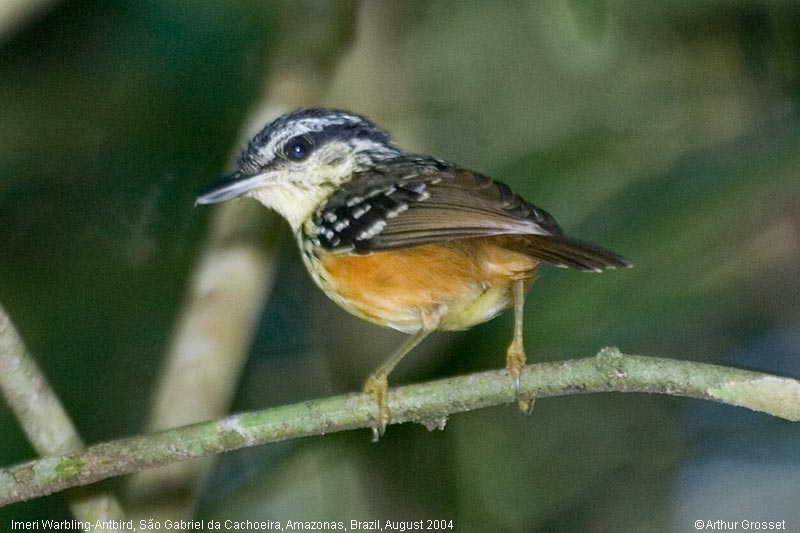
Hypocnemis cantator
TAXONOMY
Hypocnemis cantator Boddaert, 1783.
OTHER COMMON NAMES
French: Alapi carillonneur; German: Singameisenschnдpper;
Spanish: Hormiguero Cantarнn.
PHYSICAL CHARACTERISTICS
5 in (12 cm), with a black iris and short tail.
DISTRIBUTION
Amazonian region of northern South America, including southern
Venezuela, Guyana, southeastern Colombia, eastern Ecuador,
eastern Peru, northern Bolivia, and widely in Amazonian Brazil.
HABITAT
Below 3,300 ft (1,000 m) in dense undergrowth vegetation of
the borders of humid tropical forest and secondary forest, often
in the vicinity of wet areas.
BEHAVIOR
Nonmigratory pairs defend a breeding territory. Song of males
is a rapid series of notes, sometimes echoed by the female.
FEEDING ECOLOGY AND DIET
Glean insects and other arthropods from foliage in dense
lower-canopy vegetation.
REPRODUCTIVE BIOLOGY
Monogamous pairs bond for life, typically lay two eggs, and
share incubation and care of nestlings and fledglings.
CONSERVATION STATUS
Not threatened. Widespread and relatively abundant.
SIGNIFICANCE TO HUMANS
No direct significance, except for the indirect economic benefits
of bird-watching and ecotourism.
Photo Gallery of - Warbling antbird
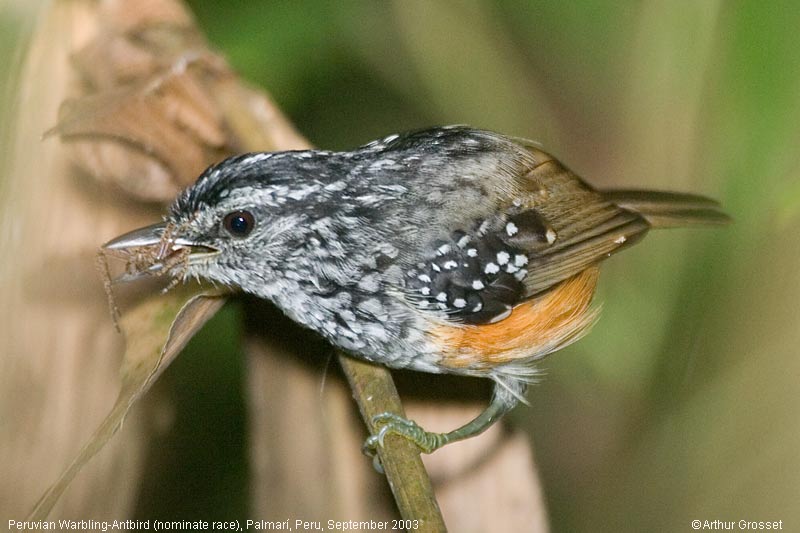
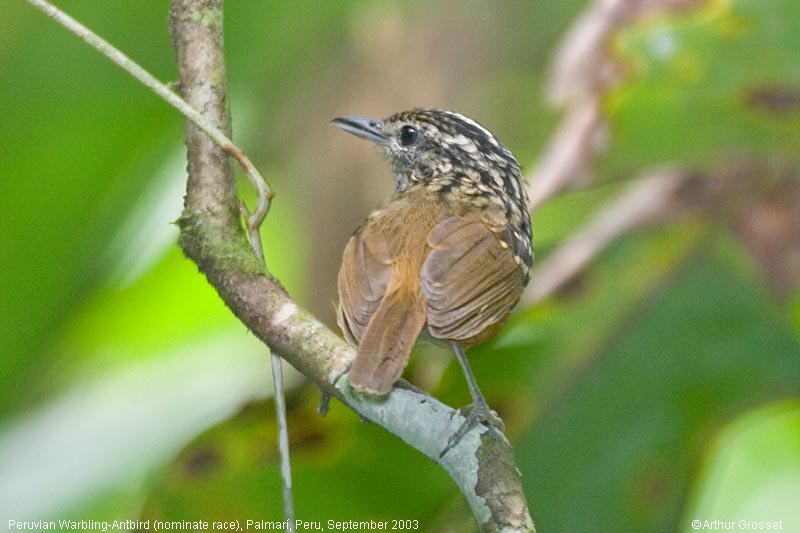
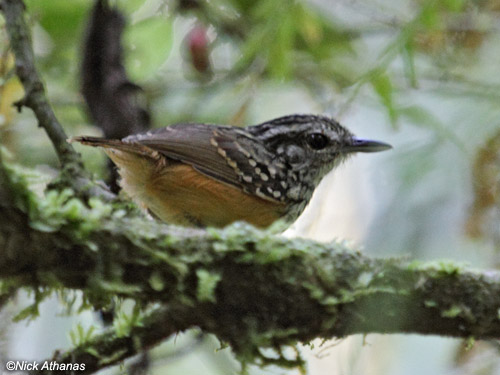
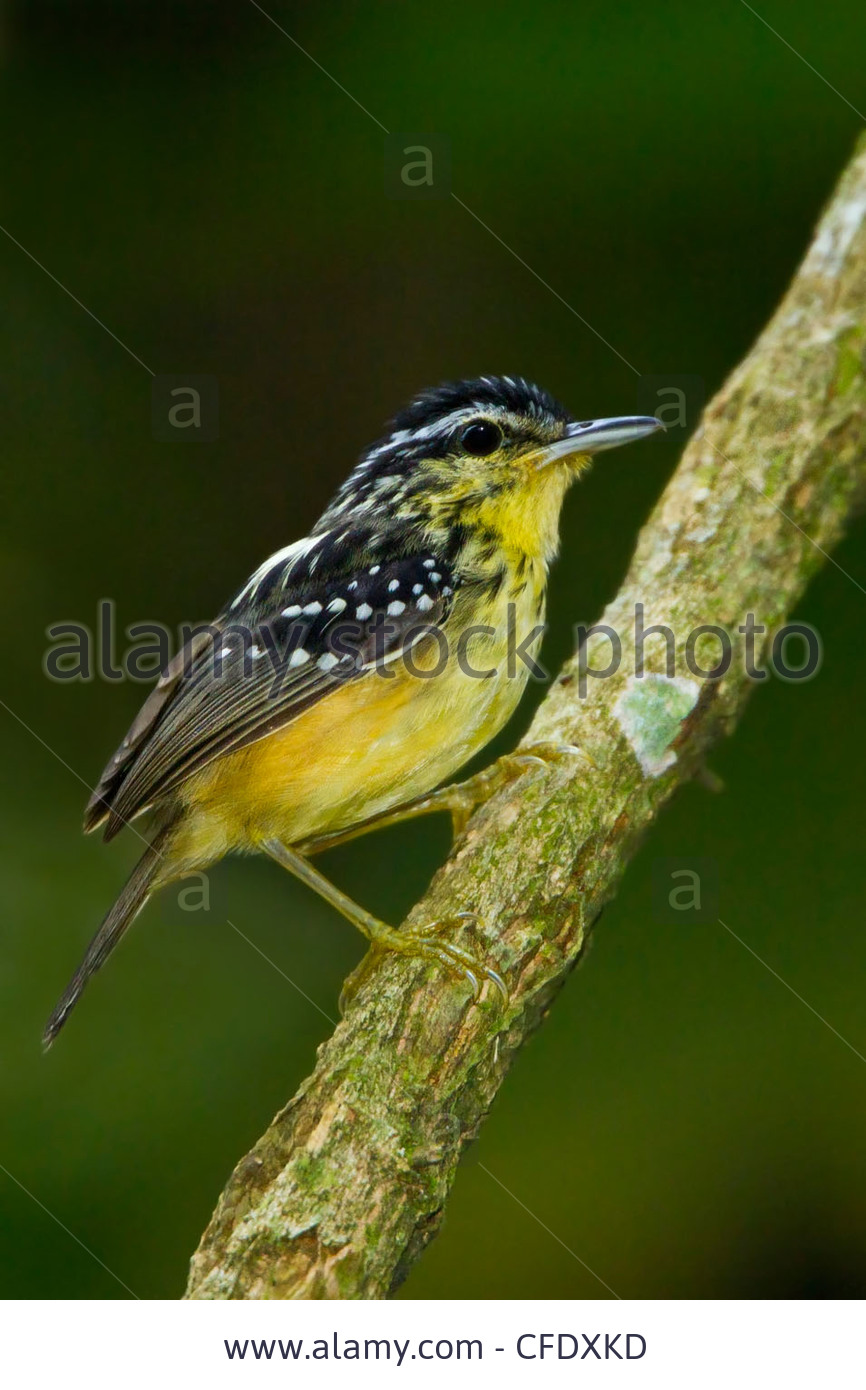
 Animalia Life
Animalia Life